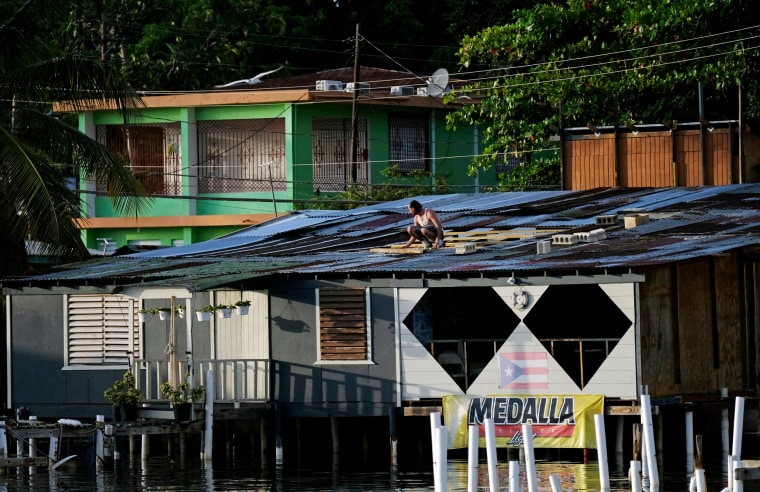Puerto Ricans are feeling the effects of Dorian, which strengthened to a Category 1 hurricane and was coming toward the island's northeastern coast on Wednesday afternoon.
The storm presents itself as the first true test of Puerto Rico’s fragile electrical grid and infrastructure, which are still recovering from the devastating Category 4 Hurricane Maria in 2017 — the deadliest natural disaster in the United States in more than a century.
How bad will Dorian slam Puerto Rico?
The storm is hitting the Virgin Islands, with St. Thomas reporting winds of about 90 miles an hour, according to meteorologists in Puerto Rico on Wednesday afternoon.
Earlier in the day, the eastern islands of Vieques and Culebra, which are part of Puerto Rico, were already feeling hurricane force winds, according to the National Hurricane Center.
Though it's not going to hit Puerto Rico like Hurricane Maria, which was a Category 4, "we are prioritizing getting ready for floods,” Roberto García, director of the National Meteorological Service in San Juan, said in Spanish.
Some areas could see 4 to 8 inches of rain but more remote parts could see more than 10 inches, García added.
“Those that live near flood zones should evacuate their homes,” García said.
Puerto Rico’s Emergency Management Commissioner Carlos Acevedo said that 360 schools are ready to serve as shelters.
“To put that in perspective, a little over 200 schools were opened during Maria,” Acevedo said.
What are the main worries ahead of the storm?
After Maria, Puerto Ricans survived the longest power outage in U.S. history and the world's second-longest blackout — with some homes without power for about a year.
Already in Yabucoa on the east side of the island, there are reports of only intermittent access to water since the systems require electricity and some homes have lost power.
Maria also destroyed the island’s telecommunication systems, leaving millions of Puerto Ricans without a way to seek help or alert other family members of their situation.
Two years after Maria, tens of thousands of homes in Puerto Rico have some or extensive roof damage, with many still covered with blue tarps, according to Deepak Lamba-Nieves, research director at the Center for a New Economy, a nonpartisan think tank.
About 9 percent of all the homes in Fajardo, a town in the east where the storm is expected to come in, have roof damage or blue tarps.
What has the island done to get ready?
José Ortíz, the head of the island's power authority PREPA, said Tuesday that the agency has the needed inventory, including 120,000 lights, 23,000 electrical posts and 7,400 transformers in case the storm damages the grid. In addition, the government has been coordinating with some states' utility companies in case they need manpower and supplies.
Puerto Rico Gov. Wanda Vázquez said hospitals have the necessary generators to operate in case they lose power.
Acevedo said the island’s telecommunications systems are "working 100 percent" and ATM machines are still functioning and had cash. However, he stressed that the number of Puerto Rican customers without electricity "should increase" as Dorian approaches Puerto Rico.
Cristóbal Jiménez, a community leader with the group Corazón Latino who has lived in Fajardo for more than 40 years, is one of the roughly 35,000 people in the town bracing to receive torrential rains Wednesday afternoon.
During the morning, he was helping a local church to prepare to serve as a shelter if necessary.
For Jiménez, “water is the major concern,” since Fajardo is a coastal town where floods are already frequent.
However, he feels confident that his community is ready.
“We are prepared for a hurricane,” Jiménez told NBC News. “After Maria, we know everything we need to do to be ready. … Now, we just want this to go away fast and see if the government finally learned the lessons” from Hurricane Maria.
Follow NBC Latino on Facebook, Twitter and Instagram.

